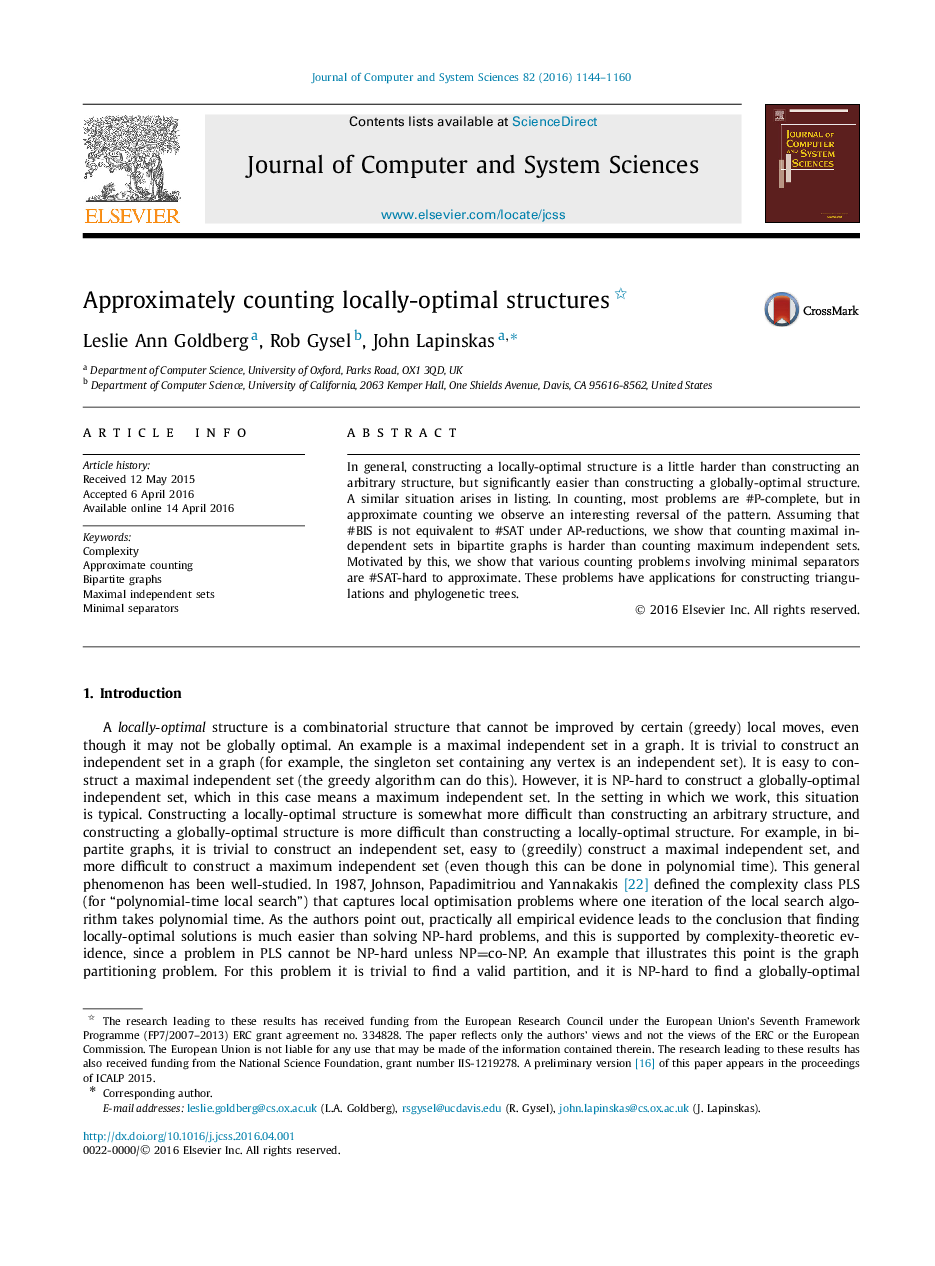| Article ID | Journal | Published Year | Pages | File Type |
|---|---|---|---|---|
| 429761 | Journal of Computer and System Sciences | 2016 | 17 Pages |
•Approximately counting maximal independent sets in a bipartite graph is #SAT-hard.•Replacing “maximal” by “maximum” yields #MAX-BIS, which is conjectured to be easier.•Normally “maximum” problems are harder to solve than “maximal” problems, not easier.•Approximately counting minimal separators in a bipartite graph is also #SAT-hard.•How often is the usual pattern reversed in approximate counting?
In general, constructing a locally-optimal structure is a little harder than constructing an arbitrary structure, but significantly easier than constructing a globally-optimal structure. A similar situation arises in listing. In counting, most problems are #P-complete, but in approximate counting we observe an interesting reversal of the pattern. Assuming that #BIS is not equivalent to #SAT under AP-reductions, we show that counting maximal independent sets in bipartite graphs is harder than counting maximum independent sets. Motivated by this, we show that various counting problems involving minimal separators are #SAT-hard to approximate. These problems have applications for constructing triangulations and phylogenetic trees.
